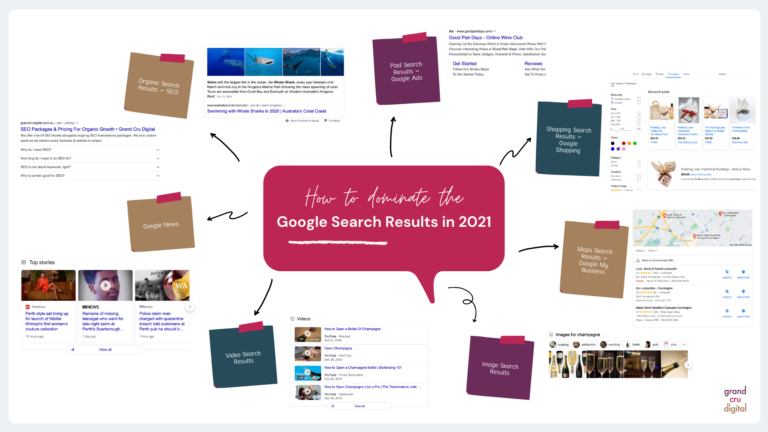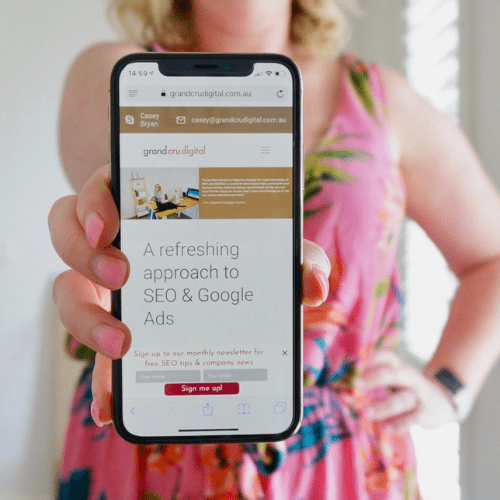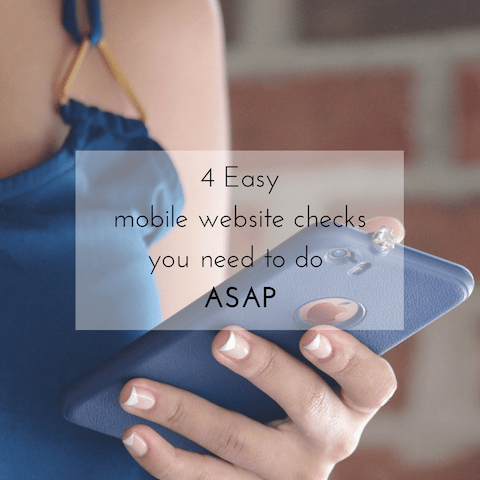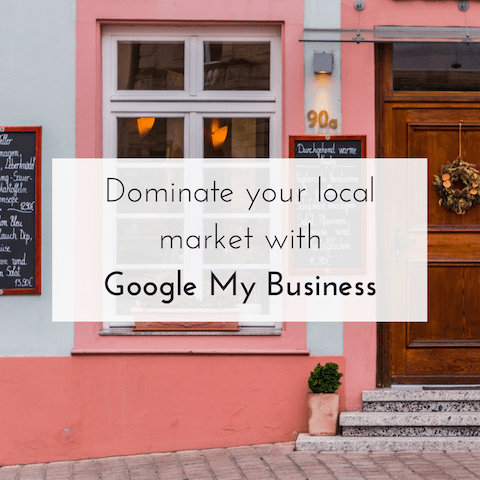Every year on Google’s birthday (27th September 1998) I add a new SEO tip to this post to help celebrate the search engine giants birthday.
In 2023 we are celebrating Google’s 25th birthday which means I have 25 epic SEO tips for you below.
It’s crazy to think over 25 years ago Google was created. At the time I was about to turn 13 and was obsessed with Buffy the Vampire Slayer and I knew the song Never Ever by the All Saints, word for word. We also had one of those dial-up internet connections at home that everyone in the house could hear dialling up.
Now let’s get stuck in, here are my top 25 SEO tips:
1. Optimise your metadata
Metadata is the snippet of words that show on the search result pages. This important content
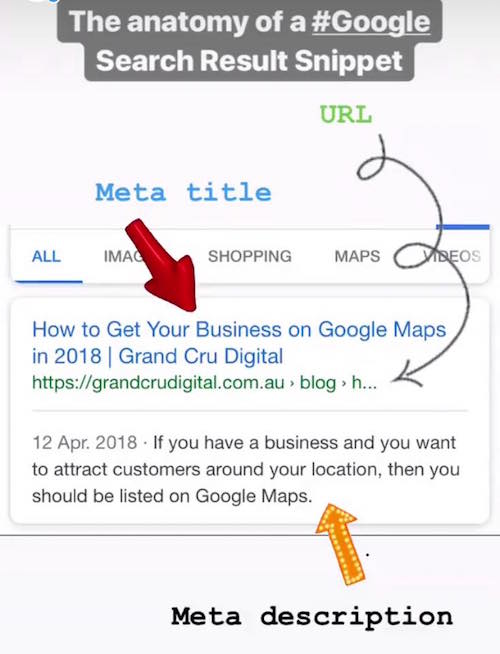
2. HTTPS secure websites only
If you haven’t migrated from HTTP (not secure) to HTTPS (secure) then you need to do this ASAP. And if you’re launching a site, make sure it’s HTTPS from the get go.
3. Make your website fast
Ain’t nobody got time for a slow website! Shaving a few seconds off your page load times can make a huge difference between someone buying your product/contacting you and leaving your website to only go and do that on your competitor’s website. Speed is key for both desktop and mobile websites.
I recently had both my websites speed up by the team at ClickWP who did an amazing job.
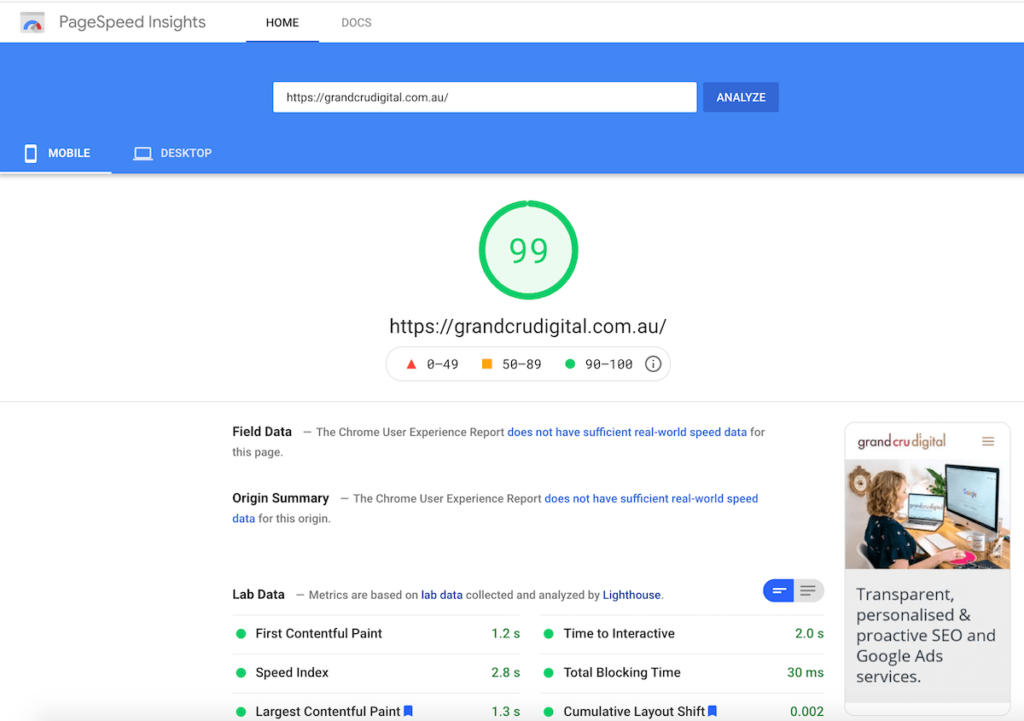
4. Optimise images
Images are typically one of the biggest culprits that slow a website down. They are also a great visual search tool for anyone searching on Google images. Therefore, make sure your images are as small as possible prior to uploading (under 100kb if possible), give them a relevant file name and add ALT text after uploading to your website.
Learn How to Optimise Images on Your Website to Attract More Customers here.
5. Mobile Friendly
This should be no surprise. More and more people are searching from mobile devices. Which means your website needs to be accessible and usable by people on a mobile. Make sure to check your website regularly using Google Search Console and Google’s Mobile Friendly testing tool.
6. Website tracking
What is your website doing for you? If you’re throwing money at it, then it should be adding value to your business right? Using
Learn How to Make Google Analytics Your Small Business Superpower.
7. Internal linking
The GoogleBot is a crawler which crawls websites to see how they are structured and what’s on them. With this information, it then adds your web pages to Google’s index. By adding internal links on your pages, like if I was to link to this post on SEO friendly blog post tips, it’ll help Google understand my website better and pass value between my web pages.
The anchor text (words that you hyperlink) should be over words that explain to the user and Google, what they should expect to see on the linked page. Also, don’t forget to make sure people can see where your internal links are. Make them stand out.
8. Backlinks from other websites
When another website links to one of your pages, it’s like a vote of confidence in Google’s eyes. Therefore if you have a lot of relevant websites pointing links to your website, not only will you be getting referral traffic, but Google will think higher of you. You can obtain backlinks via media mentions, online business directories, guest posting and more!
9. Claim your free Google listing
It’s free, so why wouldn’t you claim it! Google business and maps listing’s shows on the search result pages and there’s actually a lot of fun things you can do with your Google Business Profile to gain extra attention on the search result pages.
And if you’re not sure where to start, simply follow these steps to get your business on Google today.

10. Do a site: search for your website
A site: search is where you type into Google, site:grandcrudigital.com.au, but replace my domain with yours. By doing this, you’ll see all the pages on your website that are in Google’s index. From here you can check all your important pages are listed and also see how your metadata is looking.
11. Use Google Search Console
Google Search Console is a free tool from Google. It helps you understand how Google sees your website and if there are any red flags which may be hindering your performance. If Google has any important updates that may affect how your website is indexed, you’ll also get notifications in here.
This is my most favourite tool when it comes to SEO. Plus it’s data that comes directly from Google – no other tool on the internet can give you more accurate data than Google Search Console.
12. Helpful, useful & easy-to-read content for your customers
Content is important to SEO because Google reads your content. But the key to having content that Google will love is that the content is useful, unique, helpful, interesting and easy-to-read for your customers first and foremost. Make sure all the content on your website is written for your customers and that it will help them on their journey with your business.
Never copy content from anywhere else on the web. Copying content is a big no no and will get you no where with Google.
Make sure to read all about Google’s Helpful Content System.
13. Use heading tags
Heading tags are typically shown in content management systems as ‘heading 1’, ‘heading 2’ etc. The heading 1 on a page should be your main title, and subheadings in order of importance should be made as heading 2, 3, 4 etc. This helps to tell Google the hierarchical structure of your content.
14. Add structured data markup
Structured data is code that goes around your content. It
15. Structure your website pages
Most websites have a tree-like structure. Your homepage is the trunk and you have the main topics coming out of this and under these your sub-topics. This tree like structure should be seen in your URLs. In web-speak, we call these ‘subfolders’. Basically, all your content should be grouped into specific sections on your website. E.g.
grandcrudigital.com.au
grandcrudigital.com.au/seo/
grandcrudigital.com.au/seo/pricing/
16. Add breadcrumbs
Breadcrumbs are a small row of internal links typically at the top of the page under the main heading. They show where you are on the website. A user can then click to go back to the main topic or the homepage. Google also loves breadcrumbs as again it helps to explain the structure of the website to the GoogleBot.
17. Create a useful custom 404 page
Someone lands on a 404 error page when they click on a broken link. It’s best to try to avoid this at all costs, but it’s just one of those things that can happen. So it’s best to be prepared for it. By creating a custom 404 page it’ll help users navigate back to your website, hence, improving the user experience.
18. Simple and SEO friendly URLs
A URL is the website address for a particular page on your website. Where possible you want to keep these short and simple. If someone were to see the URL it should convey what they are going to see on the page. Avoid using unnecessary numbers and underscores (use hyphens instead).
19. Promote your website
If you’ve got a website and you’re actively making sure it’s the best thing since sliced bread, then make sure people know about it. Add it to your bio on your social media profiles, to your business cards and on business signage. You can even look at sending out email newsletters to let people know when you add new content to the website.
20. Read Google’s SEO Starter Guide
And last, but definitely not least. If you’re going to DIY SEO or you’re going to hire an SEO consultant to help you, make sure you/they have read Google’s SEO Starter Guide. This is the bible to SEO best practice and should be followed at all times.
21. Sign up for Free Shopping listings (eCommerce)
If you sell products online, then it’s a no brainer to list your products in the free Google Shopping results. This new function was launched in 2020 to help retailers get their products in front of more eyes during the pandemic.
Learn How to List Your Products on Google Shopping for Free.
22. Use Google Tag Manager
Google Tag Manager is another free tool from Google which helps you streamline all the tracking codes on your website. By streamlining you’ll help to reduce the load speed of your pages. Plus you can track some pretty cool. things like clicks on outbound links on your website, video views, and more.
Learn How to Set up Google Tag Manager on your website.
23. Regular Google My Business health checks
Once you have set up your Google My Business listing, the work doesn’t stop there. You need to be constantly keeping your business hours and information up to date alongside adding new posts regularly and gaining regular reviews on the listing.
I really hope these SEO tips help you get on the road to becoming great friends with Google. I’d also like to point out that I share plenty more tips on my social media channels. If you require an SEO consultant to help you with your website on an ongoing or one-off basis, then please don’t hesitate to get in contact today.
24. Flaunt your expertise and authoritativeness
If you don’t have an About page on your website – this is your sign to create one ASAP. It’s important you tell people and Google who you are and why you do what you do. Plus why people should trust you. What’s your background, your qualifications and skills in your particular interest. Check out our about page for some ideas.
Likewise if you have multiple authors writing articles for your blog, make sure to include author bios so people and Google can understand the expertise and backgrounds of the people who are sharing their knowledge on your blog.
25. Don’t forget videos show on the SERPs too!
We now live in a time where video content is big and it is pretty much a ‘must’ for most businesses. However don’t just think of videos for your social media. Also think about incorporating video into your websites and adding video content on YouTube because these videos can show on the search results too and get more exposure for your brand.
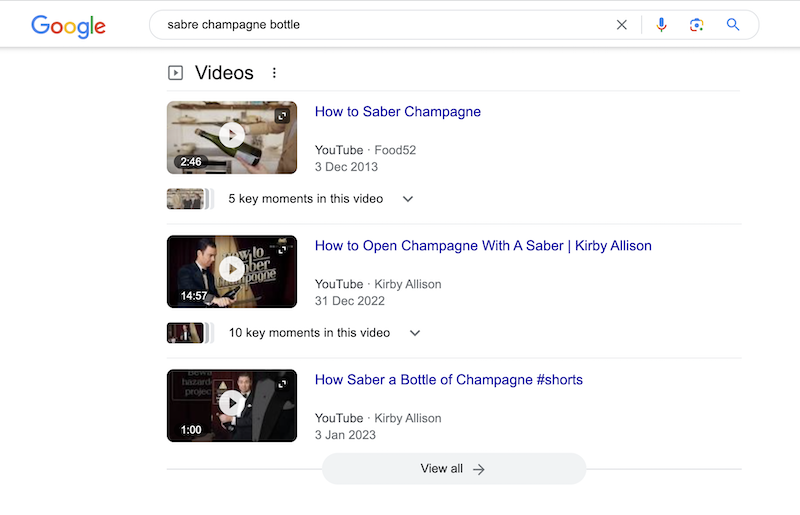
And also don’t forget you can repurpose your Reels and TikTok content via YouTube Shorts as well 😉
Stay tuned for my 26th tip coming for Google’s Birthday in 2024!

